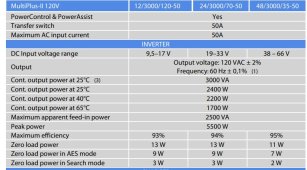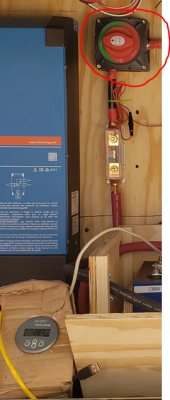NowARamGuy
New Member
- Joined
- Jan 20, 2022
- Messages
- 8
Hello. I am new to DIY solar forum. This is my first question. Through hours (months actually) of searching, reading and youtube videos, I have finally built my system and it appears functioning, but I have a parasitic -2.8 amp loss in my system that I just cannot seem to account for. I am able to run a vacuum cleaner and microwave off the Inverter and when I plug back into shore power, the Charger kicks in and tops off the batteries as expected. Once I achieve Float status, the Charger is outputting 13.75V, however the battery is being drained.
I am aware of the DC power consumables such as the fridge control panel, Carbon Monoxide detector, shunt and the BMS(s), etc. As I turn the components off, I continue to see -2.8A at the shunt. I have gone through my settings starting with the BMS(s), Shunt and Multiplex-II and have begun to reach out to the specific help lines for those components. In the interim I thought I would reach out here and see if a discussion with those who know might have a suggestion.
I was under the impression that once the Charger reached the Float state, it would be presenting enough volts/amps to power the DC consumables as well as provide power for the BMS balance operation. That doesn't appear to be the case and I am running out of things to test. Which reminds me, I have a lot of test data that I can supply, but I thought I would hold that back until asked.
Here's my system: Victron Multiplus-II 3000 120-50 2x120V, Victron BMV-712 w/shunt, Victron Lynx Distribution, 2 battery pack consisting of EVE 280Ah cells with a 120A 12V 4S Overkill BMS.
I am open to any and all criticism...that will only make my system better.
Thanks in advance,
Paul
View attachment 94514View attachment 94515View attachment 94516View attachment 94517View attachment 94518
I am aware of the DC power consumables such as the fridge control panel, Carbon Monoxide detector, shunt and the BMS(s), etc. As I turn the components off, I continue to see -2.8A at the shunt. I have gone through my settings starting with the BMS(s), Shunt and Multiplex-II and have begun to reach out to the specific help lines for those components. In the interim I thought I would reach out here and see if a discussion with those who know might have a suggestion.
I was under the impression that once the Charger reached the Float state, it would be presenting enough volts/amps to power the DC consumables as well as provide power for the BMS balance operation. That doesn't appear to be the case and I am running out of things to test. Which reminds me, I have a lot of test data that I can supply, but I thought I would hold that back until asked.
Here's my system: Victron Multiplus-II 3000 120-50 2x120V, Victron BMV-712 w/shunt, Victron Lynx Distribution, 2 battery pack consisting of EVE 280Ah cells with a 120A 12V 4S Overkill BMS.
I am open to any and all criticism...that will only make my system better.
Thanks in advance,
Paul
View attachment 94514View attachment 94515View attachment 94516View attachment 94517View attachment 94518




